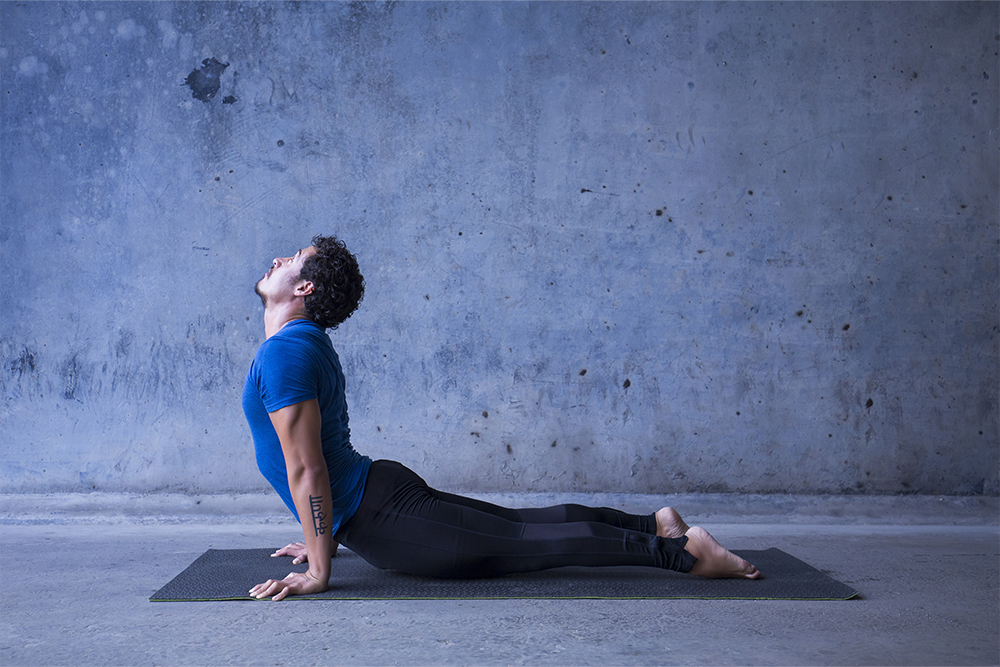Yoga for Kidney

Kidneys play a vital function in purifying the blood in our body by filtering wastes from it. Kidneys also help in the functioning of the urinary system, maintaining blood pressure levels in the body and secretion of hormones. They also maintain the level of acid and bases, that is homeostasis, in the body. Clearly, the kidneys are one of the most important organs in the body and should be taken proper care of.
Yoga for Kidney
Yoga poses help in stimulating and massaging various organs that help bring the body to an optimal condition. Yoga for kidney affects other parts of the body as well. So in your practice of yoga for kidney health, you are helping the entire body.
Yoga can activate blood circulation to the kidney region by simply practising these 5 yoga postures on an empty stomach every day, each posture starting with 30 seconds each. These postures help to reduce symptoms and aid in faster healing for problems like kidney stones and chronic kidney pain.
Practice these simple yoga poses to ensure the health of your kidneys.
1. Bridge Pose (Setubandhasana)
One of the poses in yoga for kidney is the bridge pose also known as setubandhasana. Setu means bridge, bandha means bound and asana means posture.

Steps:
- Lie on your back with arms by your sides.
- Bring back of the heels closer to sit bones, knees over ankles.
- Feet hip-distance apart and press into the feet.
- Inhale, engage the core muscles, lift the hips up towards the sky.
- Stay in the pose for 30 seconds.
- Exhale, lower the hip and release the posture. With control release hips back down to the mat.
Benefits:
- Helps manage thyroid imbalances of hyperthyroid and hypothyroid.
- Relieves backache, strengthens the spine and relieves neck strain.
- Helps prevent arterial blockages or cardiac arrest by resting the heart muscles and increasing blood circulation to the arteries.
- Helps rest tired legs and prevents varicose veins.
2. Cobra Pose (Bhujangasana)
Bhujangasana - 'bhujanga' means 'cobra' and 'asana' means 'posture '. This pose is one of the best poses in yoga for kidney health sequence as it stretches the abdominal muscles.

Steps:
- Place hands beside the chest, elbows tucked in, hips and legs pressing into the earth.
- Inhale to push into the ground with hands and lower body and slowly lift up, leading with the nose, chin and chest keeping the neck and spine long.
- Stay for a few breaths. Exhale and slowly; move your belly, chest, chin, nose and forehead resting on the floor.
Benefits:
- Strengthens the spine.
- Stretches chest and lungs, shoulders and abdominal organs like kidney, liver, intestine.
- Soothes sciatica.
- Opens the heart and lungs and is therapeutic for asthma.
3. Supine Spinal Twist Yoga Pose I (Supta Matsyendrasana I)
One of the most relaxing yet effective poses that yoga for kidney health includes is the supine spinal twist pose. Supta Matsyendrasana, in Sanskrit, means ‘supta’ is ‘recline’, ‘matsya’ is ‘fish’ and ‘endra’ refers to Lord Indra the ruler. The name Matsyendra here refers to the lord of the fishes, and in this pose, it depicts the pose Ardha Matsyendrasana in the supine version.

Steps:
- Inhale, bring the left leg over the right thigh, rest the left inner thigh and knee on the floor towards the right side.
- Exhale, twist towards the right from the hips while you turn towards the left.
- Hold the left knee with the hand, place the other hand and stretch.
- Hold this pose for 30 seconds.
- Exhale, release and repeat on the other side.
Benefits:
- Gives a great massage to the abdomen helping the inner organs like the kidney.
- Improves the flexibility of the spine at the lower back.
- It’s a good restorative pose for keeping the mind calm and reducing insomnia.
- Improves digestion.
Watch video om Effective Yoga Poses for Kidney Health and Prostate Glands
4. Revolved Cobra Pose (Parivrtta Bhujangasana)
Another amazing asana practised in yoga for kidney health flow is the revolved cobra pose, also known as Parivrtta Bhujangasana. Parivrtta means revolved or twisted, bhujangasana - 'bhujanga' means 'cobra' and 'asana' meaning 'posture- cobra pose'.

Steps:
- Lying prone, arms extended beyond shoulders.
- Inhale and lift your chest.
- Exhale, turn to the right and look at the right heel.
- Hold for 3 breaths.
- Exhale, release the posture and repeat on the other side.
Benefits:
- Increases the flexibility of the spine.
- An intense twist in the prone position gives a good massage to the kidney and helps in improving the function of the kidney.
- Improves digestion with the proper functioning of the abdominal organs.
- Opens the heart and lungs.
5. Half Lord of the Fishes Pose(Ardha Matsyendrasana)
Here’s another asana in yoga for kidney health that can help stimulate the function of kidneys. The English name, Half Lord of the Fishes Pose, comes from the Sanskrit words 'ardha' that means 'half', 'matsya' which means 'fish' and 'endra' which means 'king'.

Steps:
- Bend your right leg and place the sole of your foot on the floor outside your left thigh.
- Bring your left foot around, besides your right hip.
- Adjust your seat so that both sitting bones are pressed equally into the floor.
- Right hand on the floor behind your back; fingers pointing to the back of your mat, hold your right ankle with your left hand.
- Inhale, extend up through the spine.
- Placing your left elbow outside your right knee; alternatively, you can simply hug your knee.
- Breathe smoothly, as you inhale elongate your core; exhale deeper into the rotation.
- Hold for 20 seconds.
- Inhale, come back to centre and repeat on the other side.
Benefits:
- The internal organs like the liver, heart, lungs, kidneys and spleen are stimulated and cleansed.
- Releases excess heat and toxins from organs and tissues.
- Relieves symptoms of backache, fatigue, menstrual discomfort and sciatica.
- This pose flexes the lower part of the body making the hip stronger and toned.
Along with practising yoga for kidney, intake of a proper healthy diet is also very important for the proper functioning of the kidneys. You can add Rajma i.e. “Kidney Beans” to your diet. It has good nutrition for kidney problems.
